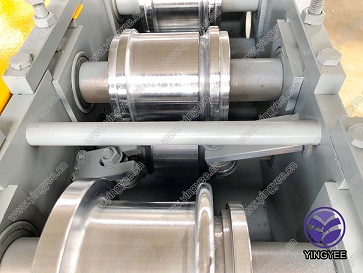
The Evolution and Importance of Water Cup Forming Machines
In an era where sustainability and efficiency are paramount, the water cup forming machine has emerged as a crucial technology in the manufacturing and packaging industries. These machines are designed to produce disposable cups for beverages, particularly water, aligning perfectly with the growing demand for convenience while addressing environmental concerns.
Understanding Water Cup Forming Machines
Water cup forming machines utilize advanced technology to create cups from materials like paper, plastic, or biodegradable substances. The process begins with the feeding of raw materials, which are then shaped, printed, and insulated before being packaged. This level of automation not only improves efficiency but also significantly reduces the margin for human error.
The design of these machines varies, with some capable of producing thousands of cups per hour, showcasing an impressive balance between speed and quality. Key components typically include a material feeder, forming modules, heating elements, and an output conveyor belt. Modern machines may also incorporate features like automatic stacking and packing, which further streamline the process.
The Manufacturing Process
The manufacturing process of water cups generally involves several stages
1. Material Preparation The raw materials, primarily polyethylene-coated paper or plastic, are prepared and cut into specific shapes.
2. Heating and Forming The cut material is heated to make it pliable. Once heated, the material is molded into the desired shape using specialized forming molds.
3. Printing Many manufacturers opt to print branding or information on the cups. This step often takes place simultaneously with the forming process, ensuring high productivity.
4. Sealing and Insulation For paper cups, an inner layer of polyethylene is often applied to make the cups waterproof. Some machines also add insulation to prevent heat transfer.

5. Quality Control Rigorous quality checks are implemented to ensure that the cups meet industry standards regarding strength, insulation, and overall finish.
6. Packaging Finally, the cups are stacked, counted, and packaged for shipment to distributors or retailers.
The Shift Towards Eco-Friendly Solutions
In recent years, there has been a notable shift towards the use of eco-friendly materials in the production of disposable cups. Water cup forming machines are now increasingly designed to work with biodegradable or compostable materials, significantly reducing plastic waste. This shift not only caters to consumer preferences but also aligns with global initiatives focused on sustainability.
Manufacturers have begun to implement innovative designs that allow machines to switch between different materials with minimal downtime. Such versatility is essential as businesses strive to adapt to changing regulations and consumer demand for sustainable products.
Economic Impact and Market Demand
The market for water cups has seen substantial growth, driven by an increase in consumption patterns related to convenience foods and beverages. Coffee shops, fast-food restaurants, and event catering services are just a few sectors that heavily rely on disposable cups. As the demand for water cup forming machines continues to rise, manufacturers are constantly innovating, seeking ways to improve efficiency, reduce costs, and enhance product quality.
Moreover, the economic impact of water cup forming machines extends beyond the manufacturing sector. They create jobs in production, maintenance, and quality assurance, contributing to local economies. The shift towards automation is also redefining the skill sets required in the workforce, leading to new training programs and job opportunities in technology-driven environments.
Conclusion
The water cup forming machine is not just a piece of equipment; it is a reflection of the changing dynamics of consumer demand and manufacturing practices. As industries continually strive for efficiency and sustainability, these machines will play an even more integral role in the global effort to provide convenience while minimizing environmental impact. The future of water cup production is undoubtedly bright, driven by innovation, sustainability, and the ever-evolving needs of consumers. As we continue to embrace these changes, it is essential to remain conscious of our environmental footprint and focus on developing solutions that benefit both businesses and the planet.